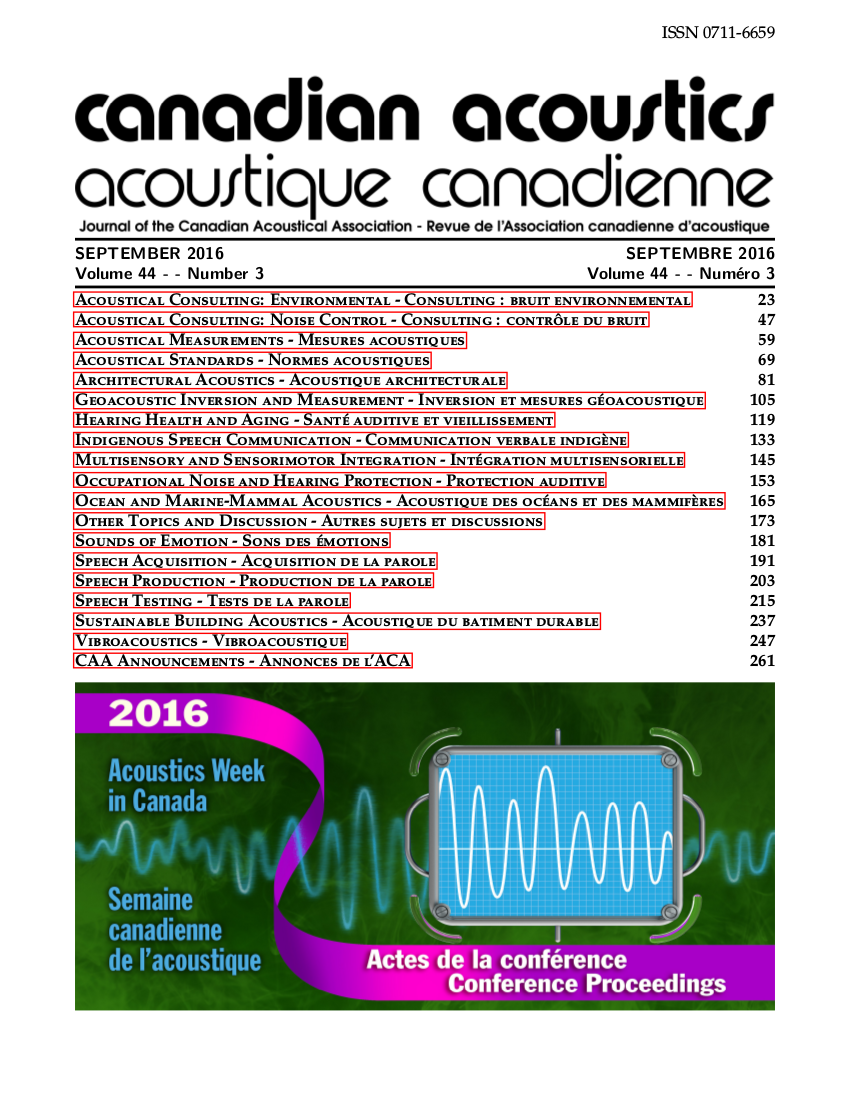Increasing Sound Insulation of Window with Add-on Systems & Various Insulating Glass Unit Configurations
Abstract
The acoustic performance of a building envelope is greatly dependent on the windows and other glazing elements. Windows represent a significant sound path for exterior noise to transmit into the interior space due to their relatively low mass. Replacement or upgrade of existing windows may be impractical due to heritage site, financial or investment considerations, and rental or condominium agreements. To combat noise infiltration in existing residential buildings, commercially available add-on systems can be incorporated to either the exterior or interior side of the windows.
This research describes results of sound intensity measurements of five types of window add-on systems and their potential to reduce sound transmission through a standard size residential unplasticised polyvinyl chloride framed window. The effects of different add-on systems were investigated on three types of insulated glazing unit (IGU), double pane, double pane-acoustic and triple pane.
All add-on systems exhibit frequency band dependent acoustic improvement from the baseline IGU. The add-on systems provide the most appreciable noise reduction when they are installed on the baseline double pane IGU, less increase performance on the double pane-acoustic and limited performance increase on the triple pane. In some instances when add-on systems are installed on either side of the double pane windows, the entire assembly acts as a triple pane IGU system with an additional air chamber created. Mass-air-mass-air-mass resonance may be found at low frequencies. Empirical measurements demonstrate the limits of the single number ratings, STC and OITC, which may indicated reduction in acoustic performance when there is a demonstrated increase in transmission loss at some 1/3 octave band frequencies. The information provides guidance in the selection of window add-on system for existing residential buildings that have high exposure to road traffic noise.
Additional Files
Published
How to Cite
Issue
Section
License
Author Licensing Addendum
This Licensing Addendum ("Addendum") is entered into between the undersigned Author(s) and Canadian Acoustics journal published by the Canadian Acoustical Association (hereinafter referred to as the "Publisher"). The Author(s) and the Publisher agree as follows:
-
Retained Rights: The Author(s) retain(s) the following rights:
- The right to reproduce, distribute, and publicly display the Work on the Author's personal website or the website of the Author's institution.
- The right to use the Work in the Author's teaching activities and presentations.
- The right to include the Work in a compilation for the Author's personal use, not for sale.
-
Grant of License: The Author(s) grant(s) to the Publisher a worldwide exclusive license to publish, reproduce, distribute, and display the Work in Canadian Acoustics and any other formats and media deemed appropriate by the Publisher.
-
Attribution: The Publisher agrees to include proper attribution to the Author(s) in all publications and reproductions of the Work.
-
No Conflict: This Addendum is intended to be in harmony with, and not in conflict with, the terms and conditions of the original agreement entered into between the Author(s) and the Publisher.
-
Copyright Clause: Copyright on articles is held by the Author(s). The corresponding Author has the right to grant on behalf of all Authors and does grant on behalf of all Authors, a worldwide exclusive license to the Publisher and its licensees in perpetuity, in all forms, formats, and media (whether known now or created in the future), including but not limited to the rights to publish, reproduce, distribute, display, store, translate, create adaptations, reprints, include within collections, and create summaries, extracts, and/or abstracts of the Contribution.


